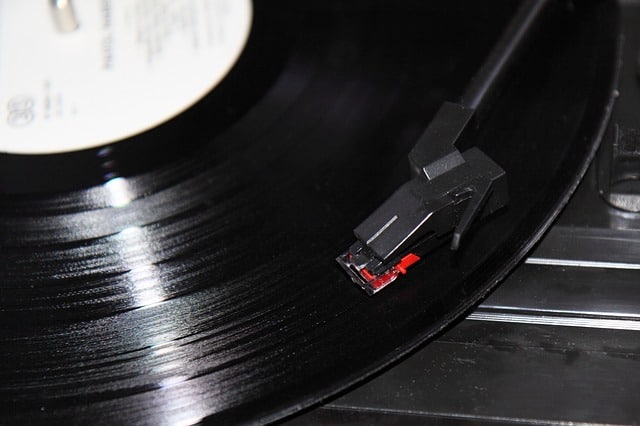We’ve already spoken on this website at length about the comeback of the vinyl record. Since the early 2000s, vinyl record sales began to grow but it really wasn’t until the late 2010s that sales really picked up steam although they have been rising every year.
Other than nostalgia, vinyl records do offer a quality music listening experience and a record player is a great addition to a home games room or basement.
If you’re new to vinyl, you might wonder about some of the potential downsides or at least things to be aware of. One of those things is avoiding any damage to the record itself.
Vinyl records can skip which means a part of the song can be missed or the same part keeps repeating itself and the song won’t progress. Skipping can be caused by dust or dirt on the record or damage to the record or stylus. New records may also be damaged due to a manufacturing issue.
Common reasons that vinyl records skip
There are a few reasons that vinyl records can skip or miss parts of the song. While you might be able to do something about some of these problems, others may not be fixable.
Dirt or dust on the vinyl
Vinyl records were traditionally sold in protective cardboard sleeves (LPs) and thinner paper sleeves (45s). While the 45 sleeves were just to protect the record, LP sleeves were much larger and were used to market the album with colorful and creative designs and perhaps a photo of the musician, on the front of the cover. On the back was usually all the tracks (songs) on the album along with producer and other notes about the album along with more graphics or photos.
So while the protective sleeves have a marketing aspect, they’re also used to protect the records from scratches, floor drops, friction and other potentially damaging mistakes you might make.
They also help to keep the vinyl clean from dirt or dust. Since vinyl records have small grooves on them to produce the sound, these grooves can collect dirt and other debris which negatively impacts your ability to play it without trouble.
How much dirt can a record accumulate? As a kid I recall removing small piles of lint that had collected on the tip of the stylus. The stylus was literally dusting the record and removing dirt as it played!
How to clean a vinyl record: Use a soft, dry microfiber cloth to wipe the album in a circular motion (the grooves on the record are circular) to remove surface dust and dirt. Then lightly dampen a microfiber cloth and again using circular motions, wipe the album again to remove remaining dirt.
Some people like to use a blast of compressed air to not only dry the vinyl but possibly remove any last remaining hard to reach dirt.
Damage to the stylus
As a kid, no one called it a stylus. It was called the needle. The needle sits at the end of the thin long arm of the record player that gets placed on the record to produce the sound through your speakers. But today, it’s referred to as the record player stylus.
Over time, it can get damaged and worn out. At some point it will not be usable any more and continued use can damage your records, perhaps permanently.
Replace your stylus: A stylus needs to be replaced after a certain hours of listening time as they eventually wear out. Check your owner’s manual to see how long your stylus lasts. You can also inspect the stylus from time to time for noticeable damage. While you won’t necessarily keep track of hours of listening, you can at least gauge when it needs to be replaced.
Damage to the record
We’ll talk below about a manufacturing issue causing damage but the record can also be damaged over time by the owner either by lack of care, dropping the record, a worn out stylus or by scratching the stylus along the record’s grooves.
You can easily scratch a record by quickly pulling the stylus along it or by dropping it on the floor or scraping it against something else if it’s not stored properly in its protective sleeve. While a record won’t necessarily shatter when dropped, it can get cracked or warped which can also happen if exposed to hot, direct sun too.
How to repair a scratched record: Record player manufacturer VICTROLA has some great suggestions on repairing a scratched record here. Before trying to fix a record though, give it a gentle cleaning as mentioned above to see if that helps.
A manufacturing issue
As a kid, I remember buying a damaged record brand new. I bought a 45 RPM record in 1983 and the first time I played it, it started repeatedly skipping just seconds into the song. The song was Da Da Da by German group Trio. It was a huge hit at the time. The record I bought clearly had a manufacturing issue as it was the only record I had that this this. I tried several other albums to see if it was the record player stylus (needle) but it wasn’t.
I took the record back and got a refund.
Solution: Take it back to the store you bought it from and get a refund or a replacement. I wouldn’t be trying to fix a manufacturer’s error.


